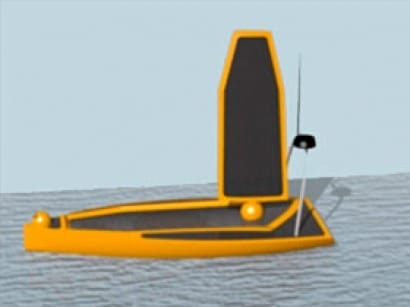Now Green Unmanned Ocean Vessels to Run on Solar and Wind Energy
In a unique partnership, the notable Australian shipbuilding company Forgacs Engineering and the international marine technological expert SolarSailor have come together to develop new ingenious models of UOV (Unmanned Ocean Vehicles). Per this partnership venture, these two marine giants will not only develop the UOV models but will also showcase and commercialise the same internationally.
The uniqueness of this newly featured UOV is its ability to offer unlimited actuation while being operated on water. This feasibility of the UOV separates it from its present-day peer devices, which while offering viability pale when it comes to long-time sustenance.
Additionally, since the UOV will be operated through solar and wind energy forces – the first of its kind –there is no threat to the marine environment and ecosystem by way of emission of noxious fuels. The contemporary unmanned vessels make use of those fuels which release noxious substances, thereby causing problems to the marine environment. Through the transition to this variant of UOV, the release of such noxious substances will be completely curtailed.
The UOV will incorporate the usage of photo-voltaic cells for its manoeuvring in the water. The principal energy supply for the operation of the vessel though will be powered by wind energy, generated through the vessel’s ‘SolarSails.’ The engineering of the vessel also incorporates a system for regenerating and storing energy though the vessel’s propelling system. Also, along with these features, the vessel also comes with an in-built lithium battery back-up system. This battery back-up also acts as a stabilising factor for the vessel in the form of ballasting equipment.
Since the vessel’s engine does not emit any sound while on water, it makes the vessel a viable choice for high-risk navy operations involving stealth and caution. Presently, according to Forgacs’ spokesperson, countries like Australia and China have already begun using these UOVs for their naval requirements.
Apart from these two international conglomerates, other countries are also researching and coming up with innovations to the existing UOVs. United States leads the researching tableau and has been carrying out extensive activities in the field, focussing centrally on its naval operations. The Station-Keeping Buoy (SKB) was launched as a part of its naval surveillance program in the year 2008 with features akin to the SolarSailor UOV model.
Through these developments, maritime operations have begun to be streamlined not just to advance international conglomerates’ profit-making, but also to ensure a safe and secure oceanic environment.
Reference & Image Credit: renewableenergymagazine
Do you have info to share with us ? Suggest a correction
About Author
Marine Insight News Network is a premier source for up-to-date, comprehensive, and insightful coverage of the maritime industry. Dedicated to offering the latest news, trends, and analyses in shipping, marine technology, regulations, and global maritime affairs, Marine Insight News Network prides itself on delivering accurate, engaging, and relevant information.

About Author
Marine Insight News Network is a premier source for up-to-date, comprehensive, and insightful coverage of the maritime industry. Dedicated to offering the latest news, trends, and analyses in shipping, marine technology, regulations, and global maritime affairs, Marine Insight News Network prides itself on delivering accurate, engaging, and relevant information.
Subscribe To Our Newsletters
By subscribing, you agree to our Privacy Policy and may receive occasional deal communications; you can unsubscribe anytime.




